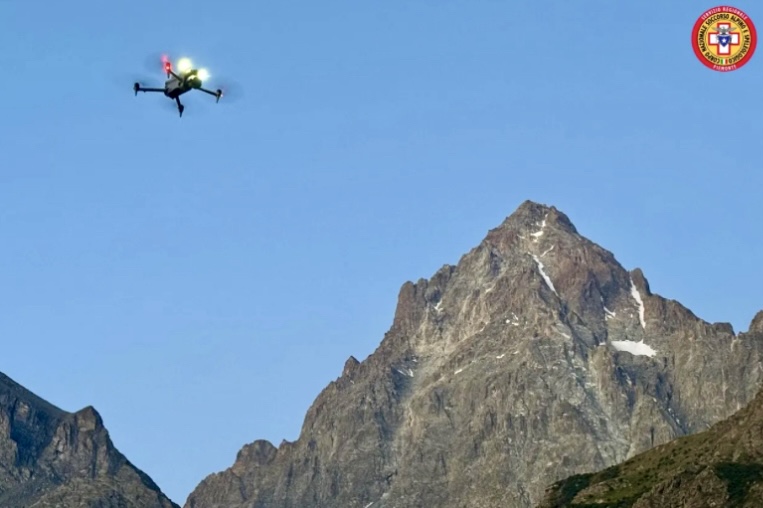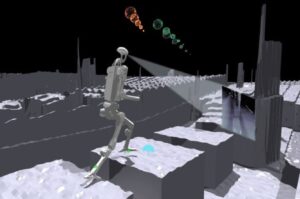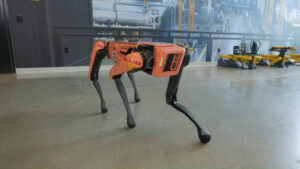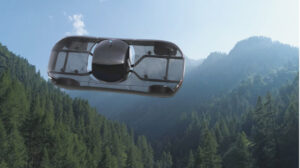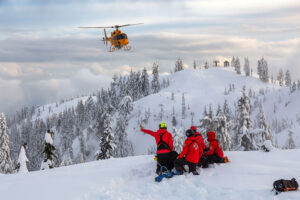At the end of last month, Italy’s National Alpine and Speleological Rescue Corps (CNSAS) used drones and artificial intelligence to locate the body of Nicola Ivaldo, a 64-year-old man who went missing in September 2024. The climber disappeared on 3,841m Monviso, the highest peak in the Cottian Alps, on the border between France and Italy.
Thanks to clues from Ivaldo’s cell phone, the search focused on the mountain’s treacherous north face, 183 hectares of steep terrain and hanging glaciers. On July 29, drones equipped with high-resolution cameras captured 2,600 images in just five hours, covering terrain too dangerous for human searchers.
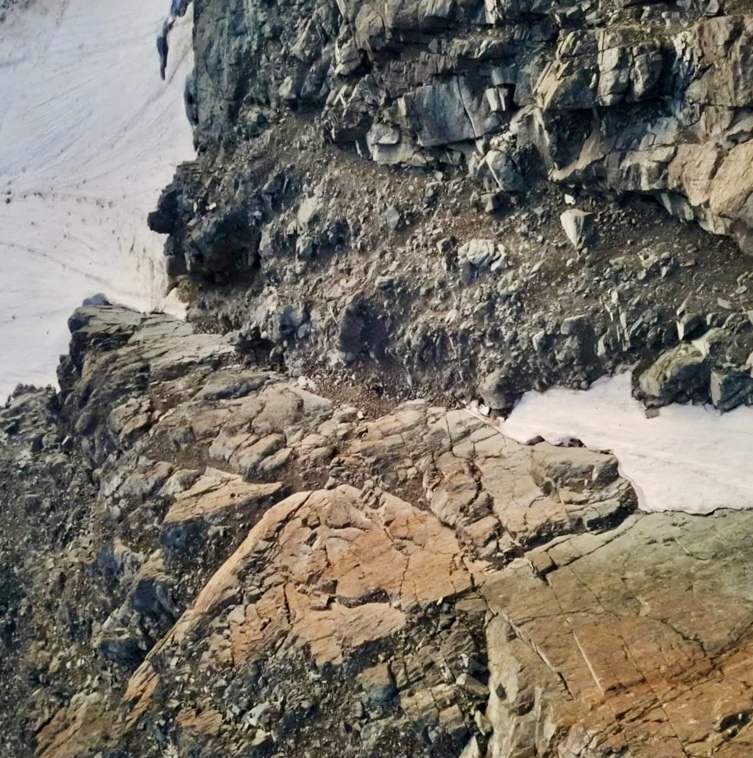
One of the drone images on Monviso. Photo: CNSAS
A telltale red helmet
Then an AI software analyzed these many images in a single afternoon, singling out a cluster of red pixels that turned out to be Ivaldo’s helmet, still on the deceased man’s head as he lay face down in the stark landscape. By July 31, the team confirmed the find at 3,150m in the steep and narrow Perotti Canal on the north face of Monviso. A helicopter recovered Ivaldo’s remains within three days, despite fog and bad weather.
According to WIRED Italy, this mission underscores the transformative power of combining drones with AI on mountain searches.
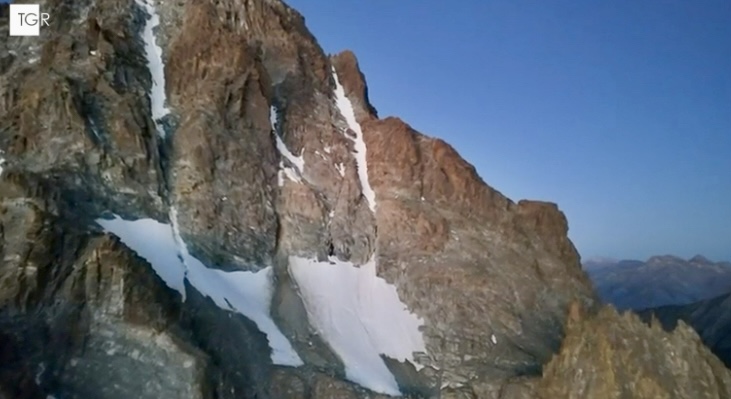
Drones can access complicated areas on mountains. Photo: CNSAS
The search organization, in coordination with Italy’s civil aviation agency, had enhanced the AI system over the past year and a half to recognize colors and shapes. It processed the drone footage far faster than human eyes could, turning weeks or months of painstaking work into mere hours.
Based on this promising success, the CNSAS aims to expand the use of AI to save lives by finding missing people faster.

Nicola Ivaldo. Photo: Quotidiano Piamontese
The disappearance
On September 14, 2024, Nicola Ivaldo, an orthopedic surgeon from Liguria, vanished during a solo hike on Monviso. An experienced mountaineer known for his passion for solitary ascents, Ivaldo didn’t share his exact route, but his expertise suggested he aimed for Monviso’s challenging northwest ridge. His phone last connected to a cell tower near Pinerolo, on the mountain’s opposite side, providing a critical clue to his location.
Ivaldo’s disappearance was reported on September 16, when he failed to appear at his medical practice, prompting alarm from family and colleagues.
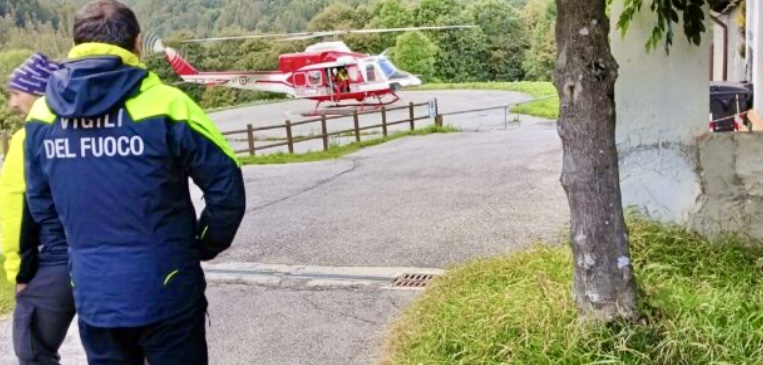
During the failed search for Ivaldo in September 2024. Photo: Laguida.it
No trace
Search efforts began on September 17, when helicopters, drones, and canine units scoured the north and west faces of Monviso, guided by the cell signal data. The rugged terrain, coupled with heavy rain, strong winds, and eventual snowfall, posed significant challenges.
By October 9, with no trace of Ivaldo and snow blanketing the mountain, the search was called off. The harsh alpine conditions dashed hopes of finding him alive, and the vast search area, complicated by imprecise cell data, frustrated efforts.
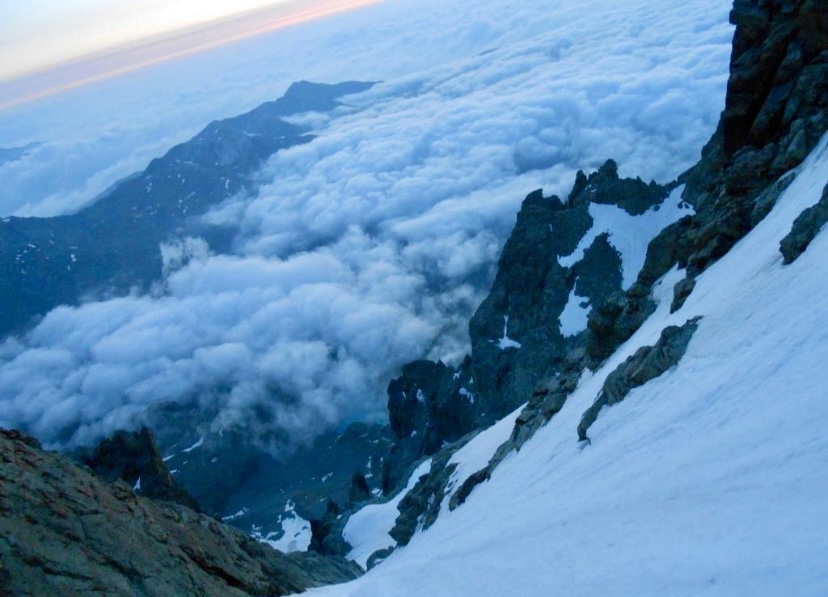
The Perotti Canal on Monviso. Photo: Gulliver.it
Monviso is known for its rugged technical terrain, particularly on the north and west faces. It’s possible that Ivaldo suffered a fatal fall in the Perotti Canal, exacerbated by sudden weather changes. Monviso’s steep, unstable slopes and unpredictable weather can overwhelm even seasoned climbers. But the forensic results carried out after his body was found haven’t been made public, so the precise cause of his death isn’t known.
However, the remote location explains why his body remained undiscovered until advanced drone and AI technology pinpointed it last month.

Rescuers descend from the helicopter to recover Ivaldo’s body. Frame of a video by CNSAS
The successful search points to broader possibilities for drones and AI in other mountainous regions, where harsh conditions often hinder searches for missing climbers. These tools could drastically speed up efforts to locate lost individuals in vast, inaccessible areas, reducing risks to human searchers. In rescue missions, drones equipped with thermal imaging cameras, which AI can analyze to detect living beings, could pinpoint stranded climbers and deliver supplies like food or medical kits.

Monviso. Photo: Wikimedia
